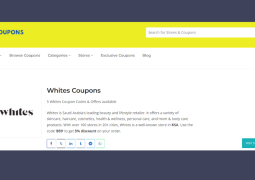Making eCommerce Returns Seamless
by 16/05/2019 23:120

U.S. online retail sales for 2017 reached $517.36 billion, up 15 percent from 2016. This is a huge jump, but not one that ought to surprise the retail marketplace. eCommerce is a great solution for consumers searching for niche products that are hard to find in general retail stores, and for those who would like to sidestep the ordeal of traveling to a brick and mortar store and all the hassles that surround the trip.
More internet sales leads to more returns—something that’s been notably awkward and time consuming for customers. Without the face-to-face interaction missing from eCommerce sales, the purchase and return cycle can be a new and challenging experience for customers. Reverse logistics is the critical moment during a customer encounter with a brand in that many customers reference if they will purchase from this brand. Because of this, retailers should strive to make the return process as customer-friendly as possible. On top of maintaining customer loyality, having a strong return policy will you keep your merchant account. Here are four steps to take into consideration when creating an eCommerce return policy.
- Create a Consumer-Friendly Experience. Being user-friendly is an essential step for creating a successful and enjoyable experience. In general, the simpler the process, the better. A standard 30-day policy great for customers because it is very clear and provides them ample time to act. Additionally, it is important to note that the return policy should be congruent with your brand. For instance, the return policy for a luxury brand needs to be flexible and detailed than the one of a discount retailer.
- Include Prepaid Return Labels. Having return lables streamlines the process and they should be included in all outbound packages. For consumers, it eliminates the step of printing and paying for postage for the return label. For the merchant, it makes the return validation check quick and can help you return the item back into your inventory.
- Include Multichannel Capabilities. Should you market in more than a single channel, you need to accept returns in every channel your business operates. Selling in multiple channels is more complex for companies. But the process is seamless for customers if businesses have the infrastructure to encourage the cross-channel experience. For example, clients need to have the ability to purchase online and bring the item back in-store. It’s particularly important during peak seasons like the holidays and annual sales. Accelerated orders can slow down your company’s overall logistics, but that could be averted using a multichannel return plan.
- Link up with Your Logistics Partner. This cannot be stressed enough when operating in numerous channels. Without constant communication between merchants and warehouses, the consumer experience suffers. Not only should the warehouse staff promptly confirm and process returns, but its logistics staff should communicate the progress in a customer-facing system. Exchanges or credits should be issued immediately and in a manner that matches brand expectations.
As the eCommerce marketplace expands, it becomes necessary for retailers and their fullfilment partners not to overlook return logistics. A return policy is key to delivering a fantastic customer experience, and merchants must make this portion of fulfillment as delivering packages quickly as a priority.



